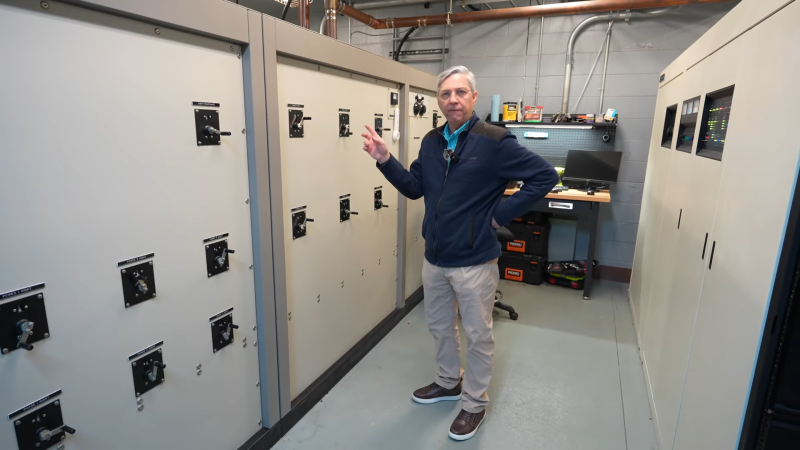If you’re in the commercial AM radio business, you want to send your signal as far and wide as possible. More listeners means you can make more ad revenue, after all. [Jeff Geerling] recently visited a tower site for WSDZ-AM, which uses a full eight towers to broadcast its 20kW AM signal. To do that, it needs a phasor to keep everything in tune. Or, uh… phase.
The phasor uses a bunch of variable inductors and capacitors to manage the phase of the signal fed to each tower. Basically, by varying the phase of the AM signal going to each of the 8 transmitter towers, it’s possible to tune the directionality of the tower array. This allows the station to ensure it’s only broadcasting to the area it’s legally licensed to do so.
The tower array is also configured to broadcast slightly differently during the day and at night to account for the differences in propagation that occur. A certain subset of the 8 towers are used for the day propagation pattern, while a different subset is used to shape the pattern for the night shift. AM signals can go far farther at night, so it’s important for stations to vary their output to avoid swamping neighbouring stations when the sun goes down.
[Jeff’s] video is a great tour of a working AM broadcast transmitter. If you’ve ever wondered about the hardware running your local commercial station, this is the insight you’re looking for. AM radio may be old-school, but it continues to fascinate us to this day. Video after the break.
















I enjoy watching their videos, but I think the old man at times gets his thoughts too far ahead of what he’s saying, which leaves a gap in following his logic.
But, then, maybe I am just jealous he got to work with all the great gear.
B^)
I liked his style of thinking and speaking. Also the humorous attitude to many things were delightful. I felt bad for the technician by remotely frying the dummy load but s*it just happens :)
I love sometimes to tune in to some random AM stations by night. From Italy I can easily hear English, Spanish, Arabic with a crappy bathroom radio.
Hope they will have a future in a world dominated by digital signals.
The same technique is used at microwave frequencies for the phased arrays that look out for incoming ICBMs.
Nice Article about AM Directionals…. and Joe Geerling has lots of experience with them !
I worked for a few stations that still employed AM Phased Array Antennas. Kintronics does a bang up job on the k50-j0 matching and sorts. Rob Elder is a genius. I truly enjoyed tuning those inductors. Directional power is amazing, but with the FCC involved nowadays some stations just go dark at sunset and come back up at sunrise. *sigh*
I get to play with an FM station in DC . Great Video.
You might find they work better in AC. Around 100 MHz is typical.